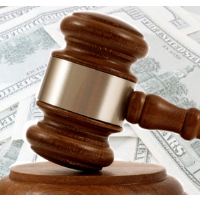Californians Owe $10.2 Billion in Court-Ordered Debt and It’s Growing

California has done a better job in recent years collecting court-ordered debt from defendants convicted of traffic violations or criminal offenses, which is why the debt has only grown to a crushing $10.2 billion.
It could be worse, and will be, if the state doesn’t change the way it collects the fines and fees, according to a report by the independent state Legislative Analyst’s Office (LAO).
The debt has grown every year since fiscal year 2008-09, when it was around $6.5 billion, to its current lofty heights, last calculated in 2011-12. During that time, debt collections increased $350 million, from $1.4 billion to $1.8 billion, but were outpaced by new delinquent debt.
Although the debt is generated by the judiciary, and the county is technically responsible for collecting it, a lot of agencies and entities participate in the collection process, including the Franchise Tax Board (FTB), the Department of Motor Vehicles (DMV), private collection vendors, the State Controller’s Office, trial courts and the Judicial Council.
Despite taking control of funding for the courts from the counties in a 1997 government reorganization, the state by and large left them responsible for collecting debt. Critics have blamed lackluster performance on the disconnect between debt collection and control of the proceeds.
The LAO agrees. That’s Number 1 and 2 on its list of 12 things that prevent the state from Hoovering up more money. There is “limited fiscal incentive for counties to collect debt” and “even less incentive for courts to collect debt,” the analyst observed.
The report said there was scant incentive to collect debt that was not yet delinquent and current approaches not only fail to provide incentive to be efficient, they “penalize cost–effective collection programs.” But lack of incentive is only part of the problem.
The collections programs themselves are pretty lame. Paperwork on how much is collected and distributed is “incomplete and inconsistent.” There is very little reporting of nondelinquent collection costs and revenues. Delinquent collections are miscalculated, collection practices are unevaluated and data on outstanding debt is sketchy.
In general, “there is limited oversight of collection programs.”
Among the boneheaded things that let scofflaws get away is a failure to grab them, before they leave the courthouse, to set up a payment plan. Communication with debtors is haphazard, making it harder to restructure debt and provide tools for streamlining payments. And judges waste precious time calculating court-ordered debt when administrative staff could do it more efficiently while setting up a payment plan.
The LAO’s central recommendation is that the “Legislature consolidate responsibility for collections into one entity” instead of splitting it up mainly between the courts and county. That way, lawmakers would know who to blame for escalating debt. Their choice is to let the courts run things.
They could delegate responsibility for actual collection to the FTB, county agencies or third-party vendors, but the courts would be in charge. The Judicial Council would coordinate the collection and reporting of statewide data on delinquent and nondelinquent debt.
Although the courts would be in charge of the process, the benefits would not necessarily accrue to them. The money would still be dispersed across government, although the LAO said current reporting practices are so shabby and distributions so variable on an annual basis that it’s hard to say where the collections go from one year to the next.
But best estimates are that local government (mostly counties) gets about 40% of the pie, while state trial court operations, court construction and other state programs, like victim/witness assistance, almost evenly divvy up the rest. That might not change if the LAO’s recommendations are adopted. The analyst recommended lawmakers sign off on a pilot program to find out.
–Ken Broder
To Learn More:
Ticket Scofflaws Owe State $10.2 Billion (by Teri Sforza, Orange County Register)
Restructuring the Court-Ordered Debt Collection Process (Office of the Legislative Analyst)
Report to the Legislature on the Statewide Collection of Court-Ordered Debt (Judicial Council of California) (pdf)
Billions in Court-Ordered Debt Goes Uncollected (by Kendall Taggart, California Watch)
- Top Stories
- Controversies
- Where is the Money Going?
- California and the Nation
- Appointments and Resignations
- Unusual News
- Latest News
- California Forbids U.S. Immigration Agents from Pretending to be Police
- California Lawmakers Urged to Strip “Self-Dealing” Tax Board of Its Duties
- Big Oil’s Grip on California
- Santa Cruz Police See Homeland Security Betrayal in Use of Gang Roundup as Cover for Immigration Raid
- Oil Companies Face Deadline to Stop Polluting California Groundwater





